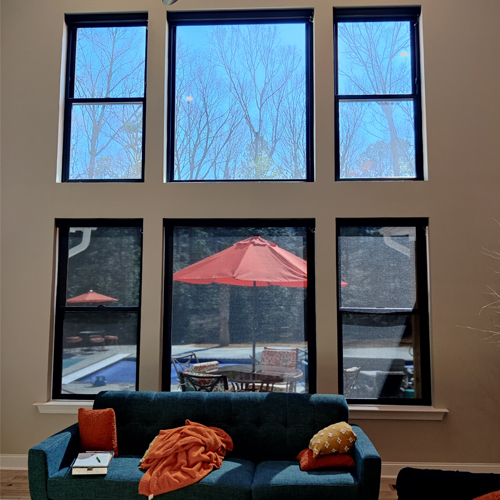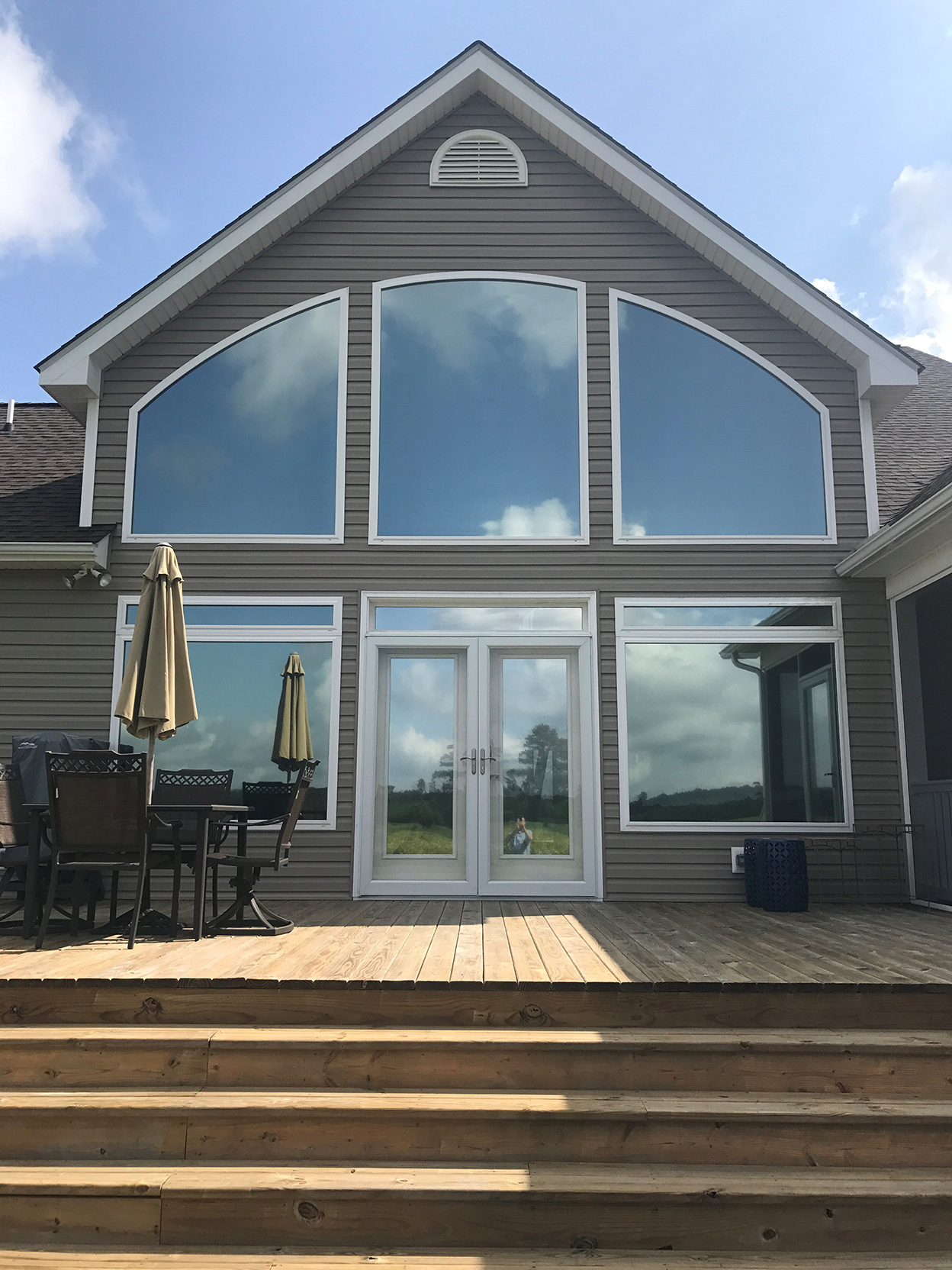Residential Window Tint: A Guide to Selecting the Right Color
Residential Window Tint: A Guide to Selecting the Right Color
Blog Article
How Residential Home Window Tinting Enhances Your Home's Power Performance
Residential window tinting provides a compelling option for home owners looking for to improve power performance within their living areas. By using specialized movies to windows, it properly reduces heat transfer, consequently stabilizing interior temperatures and decreasing the requirement for extreme home heating or cooling.
Comprehending Home Window Tinting
Recognizing home window tinting is essential for property owners looking for to boost both comfort and power performance in their living areas. Residential Window Tint. Window tinting entails the application of a slim movie to the inside or outside surface of glass home windows. This movie can substantially regulate the amount of sunshine and warm that enters a home, therefore influencing interior environment conditions
There are numerous kinds of home window tinting movies offered, each with distinctive residential or commercial properties. The performance of home window tinting is typically determined by its Visible Light Transmission (VLT) percentage, which indicates how much light can pass with the movie.
Advantages of Power Efficiency
Home window tinting not only improves looks yet also plays a substantial function in enhancing power efficiency within residential spaces. By reducing heat transfer through home windows, tinted films create a more stable indoor environment, which can lead to substantial reductions in energy consumption for home heating and air conditioning. This energy effectiveness equates into reduced utility bills, providing property owners with significant lasting savings.

In addition, window tinting enhances the comfort of living areas. By decreasing glare and obstructing hazardous UV rays, tinted windows create an even more pleasant environment, which can cause enhanced wellness for residents. The security against UV rays also helps protect furniture and floor covering from fading, adding to the durability of house things.
How Tinting Works
Tinting movies run via a mix of innovative products and technologies made to manage the quantity of solar power entering a home. Largely composed of polyester, these movies typically incorporate ceramic or metallic bits that mirror and take in heat. This twin capacity permits them to substantially decrease the infiltration of ultraviolet (UV) rays and infrared radiation while permitting noticeable light to go through.
The effectiveness of window tinting is measured by its solar warm gain coefficient (SHGC), which shows how much solar power is transferred through the home window. Reduced SHGC worths are preferable as they represent greater warmth being rejected. Additionally, home window colors can feature a selection of shades, allowing house owners to tailor their visual preferences while improving power performance.
In addition, these films function as an obstacle, preventing heat loss during colder months by reflecting interior heat back right into the living area. This thermal insulation result complements the cooling advantages obtained during warmer months, adding to a well balanced indoor environment year-round. By handling solar power effectively, household window tinting not just improves comfort but likewise plays a crucial duty in reducing energy consumption and reducing utility bills.
Picking the Right Color

There are various kinds of home window movies offered, consisting of dyed, metalized, and ceramic. Colored movies are cost-effective but might have limited durability. Metalized movies use better heat rejection however can hinder electronic signals. Ceramic movies supply exceptional heat control without endangering visibility and are highly resilient, making them a preferred option.
Visible light transmission (VLT) is one more critical element, as it suggests the quantity of all-natural light that can go through the tinted glass. Property owners ought to pick a color with a VLT that matches their illumination preferences while still offering appropriate glow reduction.
Additionally, assessing the solar warm gain coefficient (SHGC) can help establish how well a color can block warm from sunlight. A lower SHGC suggests better heat control, ultimately improving energy effectiveness.
Installment and Upkeep Tips
Proper setup and maintenance are crucial components in taking full advantage of the advantages of domestic window tinting. visit this website Experts also utilize specialized techniques and devices, which can boost the longevity and efficiency of the color.
Following installment, upkeep is essential to prolong the life of the window film. It is recommended to wait at least 30 days prior to cleaning up the colored home windows to enable the adhesive to cure totally.
Addressing these issues quickly can stop more damages and preserve energy efficiency. By sticking to these installation and upkeep suggestions, house owners can ensure their home window tinting proceeds to provide substantial power savings and convenience for years to come.
Conclusion
In verdict, property window tinting serves as an effective solution for boosting energy his comment is here effectiveness within homes. By reducing warmth transfer and obstructing harmful UV rays, window films add to reduce energy usage and that site improved interior convenience.
Window tinting involves the application of a thin movie to the interior or outside surface of glass windows. By decreasing heat transfer with home windows, tinted films develop an extra steady interior environment, which can lead to considerable reductions in energy intake for home heating and cooling.The efficiency of window tinting is determined by its solar warmth gain coefficient (SHGC), which indicates how much solar power is transmitted through the home window. By handling solar power effectively, household window tinting not only boosts comfort yet likewise plays a vital function in decreasing energy intake and reducing energy costs.
By decreasing heat transfer and obstructing harmful UV rays, home window films contribute to reduce energy intake and improved interior convenience.
Report this page